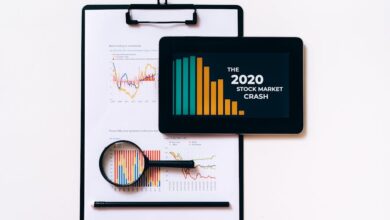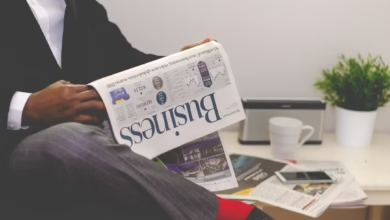Weathering the Economic Storm: Understanding Recession Indicators, Impacts, and Strategies for Resilience

In an ever-changing economic landscape, understanding the signs and implications of a potential recession is crucial for individuals, businesses, and policymakers alike. Recessions, characterized by a decline in economic activity across various sectors, can have far-reaching effects that ripple through markets, consumer behavior, and global trade. As we navigate the complexities of the modern economy, it is essential to recognize early warning signs of an impending downturn, explore effective investment strategies during these tumultuous times, and examine the critical role of government stimulus in fostering recovery. This article delves into the multifaceted nature of recessions, highlighting their impact on different sectors, the adjustments in consumer behavior, and the lessons learned from past economic downturns. By equipping ourselves with knowledge and proactive strategies, we can better prepare for, and potentially thrive in, the face of economic challenges.
- 1. **Recognizing the Red Flags: Early Warning Signs of an Economic Recession**
- 2. **Navigating the Storm: Investing Strategies for Recessionary Times**
- 3. **Government Interventions: The Role of Stimulus in Economic Recovery**
1. **Recognizing the Red Flags: Early Warning Signs of an Economic Recession**
Recognizing early warning signs of an economic recession is crucial for businesses, investors, and policymakers alike to prepare and respond effectively. Several key indicators can signal an impending downturn:
1. **Declining Consumer Confidence**: A noticeable drop in consumer confidence often precedes a recession. When consumers feel uncertain about their financial future, they tend to reduce spending, which can lead to decreased demand for goods and services.
2. **Increased Unemployment Rates**: A rise in unemployment claims can indicate that businesses are beginning to cut back on hiring or laying off employees in anticipation of reduced consumer spending. This trend can create a cycle of declining purchasing power and further economic contraction.
3. **Slowing GDP Growth**: Economic growth is typically measured by Gross Domestic Product (GDP). A prolonged period of slow or negative GDP growth is a significant red flag that a recession may be on the horizon.
4. **Inverted Yield Curve**: An inverted yield curve occurs when short-term interest rates exceed long-term rates, suggesting that investors expect economic slowdown. This phenomenon has historically been a reliable predictor of recessions.
5. **Decreased Manufacturing Activity**: A decline in manufacturing output, often reflected in the Purchasing Managers’ Index (PMI), can indicate that businesses are experiencing reduced orders and may be scaling back production in response to weaker demand.
6. **Rising Inflation**: While moderate inflation is often a sign of a growing economy, excessive inflation can erode purchasing power, leading to decreased consumer spending and potential economic contraction.
7. **Tightening Credit Conditions**: When banks become more cautious about lending, it can signal broader economic troubles. Higher interest rates and stricter lending criteria can restrict access to capital for businesses and consumers alike, further dampening economic activity.
By closely monitoring these indicators, stakeholders can gain valuable insights into the economic landscape and take proactive measures to mitigate the impact of a recession.
2. **Navigating the Storm: Investing Strategies for Recessionary Times**
Navigating the financial landscape during a recession can be challenging, but with the right investment strategies, individuals and businesses can not only protect their assets but potentially capitalize on market opportunities. One key approach is to focus on defensive investments, which tend to be less sensitive to economic downturns. Sectors such as utilities, healthcare, and consumer staples typically perform better in a recession, as demand for these essential goods and services remains relatively stable.
Another strategy is diversification. By spreading investments across various asset classes—including stocks, bonds, and real estate—investors can mitigate risks associated with market volatility. Incorporating fixed-income securities, such as government or high-quality corporate bonds, can provide a buffer against stock market fluctuations, offering more stable returns.
Investors may also consider adopting a value investing approach. During recessions, many stocks may become undervalued as market sentiment declines. Identifying fundamentally strong companies with solid balance sheets and low debt can present opportunities for long-term gains when the economy recovers.
Additionally, maintaining a cash reserve can be advantageous. Having liquidity allows investors to take advantage of lower asset prices during market downturns, providing a strategic advantage when opportunities arise.
Finally, it's essential to remain informed and adaptable. Monitoring economic indicators and trends can help investors make timely decisions. Engaging with financial advisors or conducting thorough research can further enhance one's ability to navigate investment choices effectively during recessionary periods. Overall, a balanced and informed approach to investing can help individuals and businesses weather the storm of economic downturns.
3. **Government Interventions: The Role of Stimulus in Economic Recovery**
Government interventions play a crucial role in mitigating the adverse effects of economic recessions, with stimulus measures being a primary tool for facilitating recovery. During downturns, consumer spending and business investment typically decline, leading to reduced economic activity. To counter this, governments often implement fiscal stimulus measures, which may include direct payments to citizens, increased public spending on infrastructure projects, tax cuts, and enhanced unemployment benefits.
These interventions aim to boost aggregate demand, providing individuals and businesses with the financial support needed to sustain consumption and investment. For example, direct cash transfers can help consumers maintain their purchasing power, encouraging spending on essential goods and services. Similarly, investments in infrastructure not only create jobs but also stimulate demand for materials and services, promoting economic activity.
Moreover, monetary policy often complements fiscal stimulus. Central banks may lower interest rates to make borrowing more affordable, encouraging businesses to invest and consumers to spend. In some cases, unconventional measures such as quantitative easing may be employed to inject liquidity into the financial system.
The effectiveness of government stimulus in promoting recovery can vary based on several factors, including the size and timing of the interventions, economic context, and the overall structure of the economy. Historical examples, such as the fiscal responses to the 2008 financial crisis, illustrate that well-timed and adequately sized stimulus packages can lead to quicker recoveries and reduced unemployment rates. However, the long-term implications of such measures, including potential increases in national debt, require careful consideration and planning.
In summary, government stimulus is a vital mechanism for supporting economic recovery during recessions, helping to stabilize markets, restore consumer confidence, and ultimately pave the way for sustainable growth.
In conclusion, understanding the early warning signs of an economic recession is crucial for both individuals and businesses to navigate the complexities of a downturn. As we have explored, recessions have far-reaching effects across various sectors, influencing consumer behavior, investment strategies, and global trade dynamics. By recognizing the indicators of an impending recession, investors can make informed decisions that help safeguard their assets, while businesses can adopt proactive measures to ensure resilience.
Government stimulus plays a pivotal role in mitigating the adverse impacts of recessions, providing necessary support to stabilize the economy and encourage recovery. Historical lessons from past recessions remind us of the importance of adaptability and strategic planning in overcoming economic challenges. As we face an uncertain economic future, embracing these insights will enable us to better prepare for and weather the storms of recession, ensuring a more robust recovery for all. By staying informed and flexible, we can navigate through difficult times and emerge stronger on the other side.





